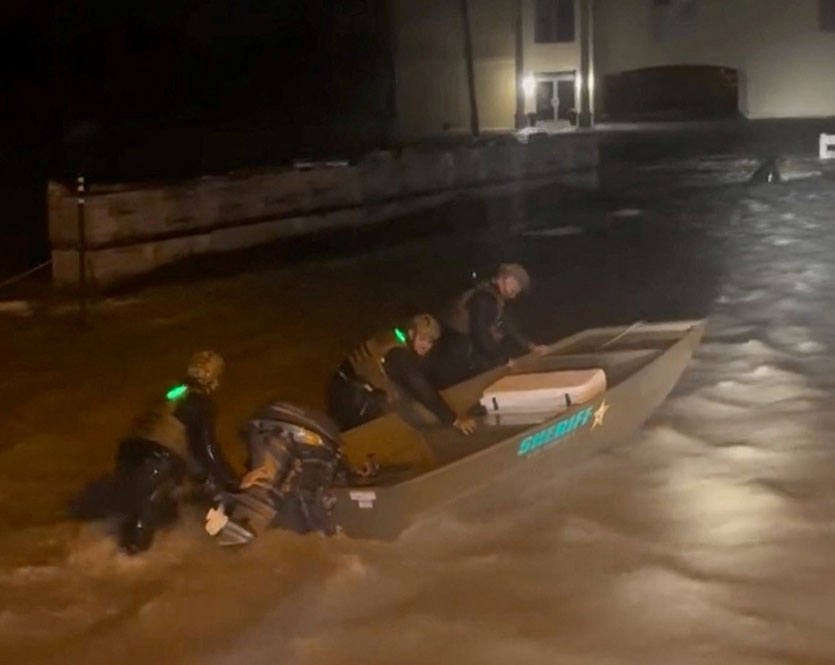(Reuters) – Helene roared through Florida and Georgia states under darkness today as one of the most powerful storms to hit the United States, killing one person, swamping neighborhoods and leaving more than 2 million homes and businesses without power.
The Category 4 storm hit land around midnight, leaving a chaotic landscape of overturned boats in harbors, felled trees, stranded cars and flooded streets, according to images from Tampa, Naples and St. Petersburg on Florida’s coast.
“When we wake up tomorrow morning, the chances are there will likely have been more fatalities,” said Florida Governor Ron DeSantis, confirming the death of a driver whose car was struck by debris.
More than 1.2 million electricity customers in Florida and 800,000 in Georgia suffered power outages, companies said.
Helene is the joint 14th most powerful hurricane to hit in the U.S. since records began, and the seventh most powerful in Florida, according to the National Hurricane Center (NHC).
Having reached Florida with 140 mph (225 kph) winds, it weakened to 70 mph (110 kph) after heading north across Georgia. Up to 20 inches (50 cm) of rain were forecast in some places.
As dawn broke, the NHC said Helene had calmed from a hurricane to a tropical storm. “Continued weakening is expected, and Helene is expected to become a post-tropical low this afternoon or tonight,” it added.
However, life-threatening storm surges, winds and heavy rains continued, the NHC said.
Residents were asked to evacuate in some places, and hunker down throughout the region.
“A really unsurvivable scenario is going to play out” in the coastal area, NHC director Michael Brennan said, with water capable of destroying buildings and carrying cars.
In Taylor County, the Sheriff’s Department wrote on social media that residents who decided not to evacuate should write their names and dates of birth on their arms in permanent ink “so that you can be identified and family notified.”
Some residents were staying stubbornly put.
“We’re under orders, but I’m going to stay right here at the house,” state ferry boat operator Ken Wood, 58, told Reuters from coastal Dunedin in Florida where he planned to ride out the storm with his 16-year-old cat Andy.
Officials in low-lying Pinellas County, which sits on a peninsula surrounded by Tampa Bay and the Gulf of Mexico, warned the storm’s impact could be as severe as last year’s Hurricane Idalia, which flooded 1,500 homes. Videos showed swamped beachside roads and water rising over boat docks.
Airports in Tampa, Tallahassee and St. Petersburg all suspended operations on Thursday. Rain was whipping parts of Florida, Georgia, South Carolina, central and western North Carolina, and Tennessee.
Georgia’s cotton and pecan crops were vulnerable in the middle of harvesting season.
Reinsurance broker Gallagher Re said preliminary private insurance losses could reach $3 billion to $6 billion, with additional losses to federal insurance programs approaching a potential $1 billion.
Energy facilities along the U.S. Gulf Coast scaled back operations and evacuated some production sites.
The director of the Federal Emergency Management Agency, Deanne Criswell, said at a White House briefing that she would travel to Florida on Friday to assess the damage.





